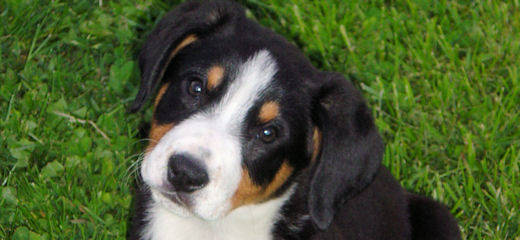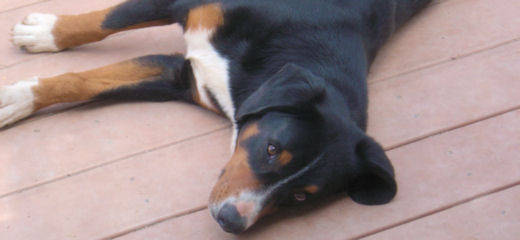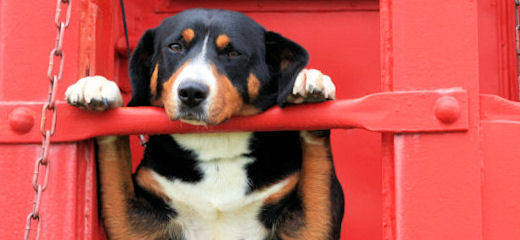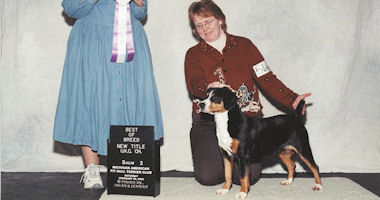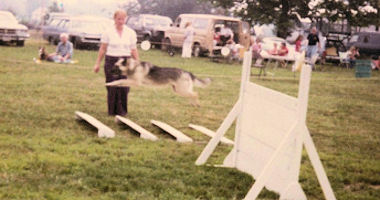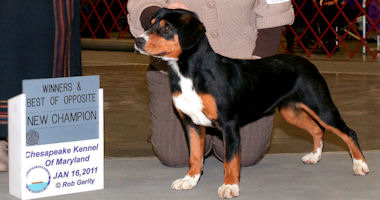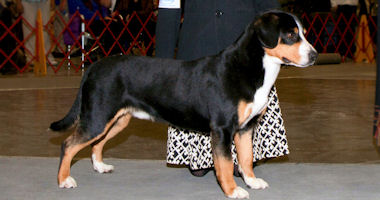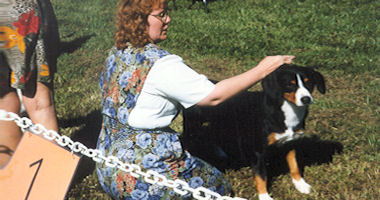General Health
Entlebuchers are basically a healthy breed. BUT, they can be afflicted with some health problems and that is why is it so important to make sure that the breeder you select has done the proper health checks prior to breeding and has also kept up with the yearly exams on their breeding animals. This is so important in this rare Entlebucher breed or any breed you would decide on.
Since there are no guarantees in life, if their possible health concerns are deal breakers, then you should consider a different breed for your family and lifestyle.
Entlebuchers can possibly be afflicted with the following diseases:
Hip Dysplasia:
Hip Dysplasia literally means an abnormality in the development of the hip joint. It is characterized by a shallow acetabulum (the "cup" of the hip joint) and changes in the shape of the femoral head (the "ball" of the hip joint). These changes may occur due to excessive laxity in the hip joint. Hip dysplasia can exist with or without clinical signs. When dogs exhibit clinical signs of this problem they usually are lame on one or both rear limbs.
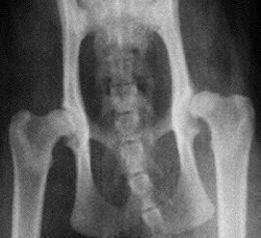 Severe arthritis can develop as a result of the malformation of the hip joint and this results in pain as the disease progresses. Many young dogs exhibit pain during or shortly after the growth period, often before arthritic changes appear to be present. It is not unusual for this pain to seem to disappear for several years and then to return when arthritic changes become obvious. Dogs with hip dysplasia appear to be born with normal hips and then develop the disease later. This has led to a lot of speculation as to the contributing factors which may be involved with this disease. This is an inherited condition, but not all dogs with the genetic tendency will develop clinical signs and the degree of hip dysplasia which develops does not always seem to correlate well with expectations based on the parent's condition. Multiple genetic factors are involved and environmental factors also play a role in determining the degree of hip dysplasia.
Severe arthritis can develop as a result of the malformation of the hip joint and this results in pain as the disease progresses. Many young dogs exhibit pain during or shortly after the growth period, often before arthritic changes appear to be present. It is not unusual for this pain to seem to disappear for several years and then to return when arthritic changes become obvious. Dogs with hip dysplasia appear to be born with normal hips and then develop the disease later. This has led to a lot of speculation as to the contributing factors which may be involved with this disease. This is an inherited condition, but not all dogs with the genetic tendency will develop clinical signs and the degree of hip dysplasia which develops does not always seem to correlate well with expectations based on the parent's condition. Multiple genetic factors are involved and environmental factors also play a role in determining the degree of hip dysplasia.
Dogs with no genetic predisposition do not develop hip dysplasia. X-ray confirmation of the presence of hip dysplasia is available and I have my dogs' hips x-rayed when they are two years old and have the x-rays sent to Orthopedic Foundation for Animals (OFA) for evaluation. You can check their site and see the results of dogs that have passed their hip x-rays.
Eye Issues:
PRA
Progressive Retinal Atrophy or PRA, as it is frequently termed is a long recognized, hereditary, blinding disorder. It is inherited as a simple autosomal recessive in most breeds. Early in the disease, affected dogs are night blind, lacking the ability to adjust their vision to dim light; later their daytime vision also fails. As their vision deteriorates, affected dogs will adapt to their handicap as long as their environment remains constant, and they are not faced with situations requiring excellent vision. At the same time the pupils of their eyes become increasingly dilated. Entlebuchers now have a DNA blood test to check for prcd-PRA. No Entlys will ever have to go blind from that variety (prcd) of the disease with use of the DNA test. Genetic tests are developed for detecting specific mutations that are known to exist. If an Ently would develop PRA and the parents were tested, that would be another form or rarer variety. See the Optigen website for more information on PRA.
Cataracts
Cataracts are basically any opacification of the lens of the eye. This cloudiness can range from tiny punctuate cataracts (similar to a piece of dirt on your glasses), to fully mature cataracts which give the eye a whitish appearance and block vision, causing blindness. I might add that there is a common old age change in the lens called nuclear sclerosis which can give the pupil a bluish/whitish cast, but does not interfere that much with vision. Entlebuchers are afflicted with a Posterior Polar Cataract. 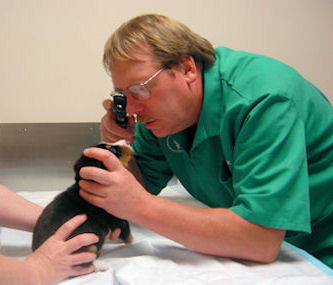 You should have your dog's eyes tested yearly by a board certified Ophthalmologist and all breeding animals should be clear of eye diseases prior to breeding. You can check the results of Entlebuchers that are free of any eye diseases by checking the CERF web site.
You should have your dog's eyes tested yearly by a board certified Ophthalmologist and all breeding animals should be clear of eye diseases prior to breeding. You can check the results of Entlebuchers that are free of any eye diseases by checking the CERF web site.
Glaucoma
Glaucoma is a disease of the major nerve of vision, called the optic nerve. The optic nerve receives light-generated nerve impulses from the retina and transmits these to the brain, where we recognize those electrical signals as vision. Glaucoma is characterized by a particular pattern of progressive damage to the optic nerve that generally begins with a subtle loss of side vision (peripheral vision). If glaucoma is not diagnosed and treated, it can progress to loss of central vision and blindness. Glaucoma is usually, but not always, associated with elevated pressure in the eye vision impairment. Glaucoma although rare in Entlebuchers, is an inherited disease in dogs which can lead to blindness and loss of the eye/s. Some of the symptoms of glaucoma may include: redness, cloudiness, tearing, squinting, an enlarged eyeball, lethargy, and unusual aggressiveness due to pain. If not treated early, blindness and/or loss of the eyes will occur.
Entlebucher Urinary Syndrome:
Entlebucher Urinary Syndrome (EUS) Ectopic ureter is an abnormally located terminal portion of the ureter. Instead of the ureter opening in the bladder it opens in the urethra, vagina, or uterus. Signs of the disease can range from no clinical signs to occasional leaking of urine, constant dribbling of urine and all the way to renal failure and death. The most common clinical presentation is slight urine leaking with occasional bladder infections. Treatment can vary depending upon the severity of the abnormalities. For dogs with minimal abnormalities and clinical signs, incontinence medication is the extent of treatment. In some individuals, surgical removal of an affected kidney and ureter is indicated. When critically afflicted individuals are diagnosed early with prompt surgical removal of a kidney and ureter, they can live long happy lives. Rarely, are there severely afflicted dogs where both kidneys are affected and the prognosis is very poor. There are no clear Entlebucher breeding lines.
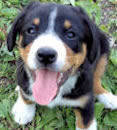 Entlebucher Health
Entlebucher Health
